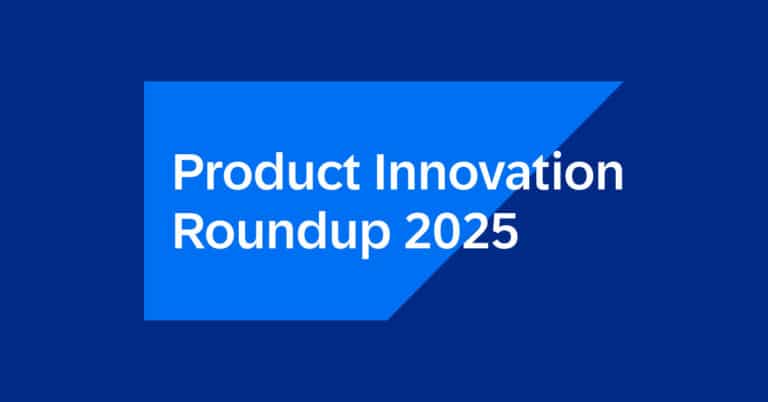Like most waistlines on America’s Thanksgiving Day, Black Friday has continued spreading out, bit by bit. Shoppers no longer confine themselves to getting their deals in-store on the fourth Friday of every November.
One of the ways we track growth and evolution of Black Friday is by looking at a particular data point especially relevant to retail marketers: the number of customer engagements. In order to drive holiday purchases during this peak season, marketers send out so many messages to customers. These enticing communications don’t just come through emails, either, but across numerous channels, as savvy marketers strive to reach customers wherever they may be.
It’s an omnichannel wonderland out there!
Read on for this year’s recap of marketing messaging trends for the Black Friday holiday.
Delivering Rapid Impact at Scale During the Peak Shopping Season
Our mission during the Black Friday holiday (and every other day of the year) is to ensure that our platform supports brand marketers on their journey to becoming truly omnichannel.
This year, Emarsys saw a 45% year-on-year increase in Black Friday customer engagements.
That number is impressive, but at second glance perhaps it could also be alarming. Doesn’t all that extra volume gum up the platform and slow everything down?
Pardon my French, but au contraire, mon ami. We’re delivering these messages faster than ever before.
When we talk about being timely and scalable, we mean it. We’re providing super-speedy delivery, and it’s brought about by the hard work and technical genius of our engineering teams, who constantly strive to make our omnichannel platform work more efficiently than ever before. When a seasonal sending spike comes along, we’re ready for it. We’re also grateful for our product and support teams, who are constantly helping to improve our platform and aid our customers along the way. And everyone has been hard at work to bring about updates and new functionality (such as everything in our Autumn Release) to put more power in marketers’ hands.
A Closer Look at the Black Friday Weekend Data
The analysis of Emarsys’ own platform data over Black Friday weekend shows a significant rise in activity compared to 2021 and includes customer engagements across key channels such as email, SMS, mobile push notifications, in-app, and web. Email particularly remains important in the context of omnichannel, not just as a standalone but as a starting point to drive traffic to other channels.
Volume increase per channel measured on the Emarsys platform from leading retailers and brands with % change since 2021. Dates for Black Friday weekend were November 24 to 27 in 2021 and November 25 to 28 in 2022:
- Overall Volume – 45% increase
- Email – 44% increase
- Push (mobile) – 54% increase
- SMS – 55% increase
- In-App – 99% increase
- Web – 48% increase
What Does It All Mean? Insights and Takeaways
The rise in SMS volume is also unsurprising given the tough economy and retailers’ need to cut through the competition and deliver the best personalized deals to customers in real time. As the Emarsys Customer Loyalty Index reported, 58% of US shoppers admitted they were most loyal to those stores offering “discounts, incentives, and rewards.”
- Marketers sent more push channel messages on Saturday than on Black Friday.
- Marketers also sent more in-app impressions over Saturday and Sunday (separately, not combined) than on Black Friday.
- Mobile inbox campaigns spiked dramatically during the weekend.
- Web channel made more impressions each day on the weekend than on Black Friday last year.
We saw a noticeable trend of our clients (savvy marketers that they are) leveraging push notifications over the weekend, even more than on Black Friday. And with good reason, too: push is a great way to follow-up after a purchase or re-engage a customer who maybe needs one more push to make that purchase. Push notifications of all kinds are great for:
- Abandoned cart reminders
- Abandoned browse messages
- Special “just for you” sales extensions
- Offers based on wish lists
- Back-in-stock notifications
- And more, for whatever your use case may be
Although the increases we saw in customer engagements across a variety of channels show a clear trend toward omnichannel, it’s important not to get ahead of ourselves. Marketers should be cautious against celebrating the sheer volume of campaigns or number of channels used alone during this Black Friday sales period, which starts earlier each year. Instead, marketers must remember that effectiveness can only come from effective targeting.
Targeted, Omnichannel Engagement Is Marketing’s Path to Revenue
The data from the Black Friday weekend clearly shows that marketers are leaning into omnichannel. And we’re not the only ones who see it. Forbes published an article titled “It’s An Omnichannel Holiday: Online Stays Strong As Shoppers Return To Stores,” describing how Mastercard SpendingPulse tracked double-digit year-over-year increases for both in-store sales and e-commerce.
Considering the way shopping behaviors continue to spread out across numerous days, it’s more important than ever that marketers personalize the content of their messages across channels. Marketing content must speak directly to customer’s needs and goals. By making it easy for customers to engage with your brand when and where they want to, on their preferred channel, you can drive loyalty and win business over your competition.
Earlier this year, we commissioned Forrester Consulting to look more closely at how companies are using omnichannel strategies to effectively deepen customer relationships to drive business growth. The result is The Omnichannel Difference: How The Most Customer Focused Companies Deliver The Value of Omnichannel, and you can download this study for free.
The survey results come from more than 620 manager-level-and-above respondents across retail, consumer products, media and entertainment, and travel and hospitality industries. From these marketers, we wanted to learn more about what results companies are seeing and how omnichannel engagement plays a role. The published study includes numerous eye-opening stats — for example, 70% of respondents from mature firms are vastly more likely to say that their company has an “established, fully documented, unified data model” as opposed to 30% of respondents from less-mature firms.
The Omnichannel Difference study also includes five key recommendations for marketers looking to improve their omnichannel strategies.
Final Thoughts: Combat the Black Friday Sprawl by Getting Personal
As Black Friday shoppers spread their purchasing power into the weekend and even backwards into Thanksgiving, and as competition grows ever more fierce, personalization and effective omnichannel communication are key marketing strategies for earning customer loyalty and delivering excellent brand experiences.
Don’t focus on sending more messages. Focus on sending the right messages.
Meghann York, Global Head of Product Marketing at Emarsys explains, “It is more about quality and timing than the volume of messaging. Brands this Black Friday weekend who will reach their business goals connected to loyalty, retention, and lifetime customer value, will have focused on personalization and listened to their customers’ needs. It’s not enough to be customer-centric anymore, we must become customer-obsessed.”
She continues, “Channels used to engage customers, of course, vary per brand. With the recent economic turmoil, wherever they chose to shop, people are being more cautious with how they spend their money, taking the time to find the best products and deals. It has never been more important that retailers build omnichannel strategies that help brands meet customers at the right moment, on the right channel, with the right message for them.”
Handpicked Related Content:













